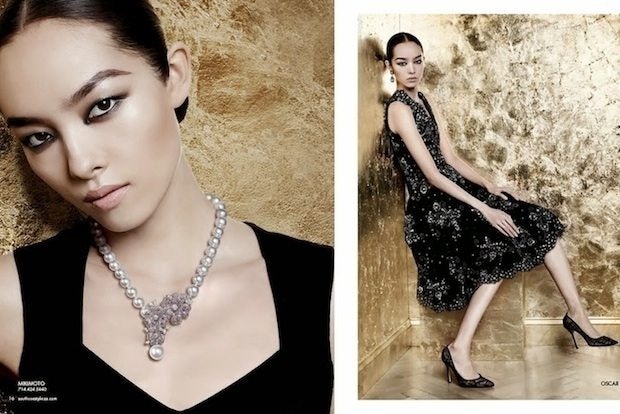
Chinese model Fei Fei Sun. (South Coast Plaza)
China’s luxury slowdown has been precipitous over the past few years: after estimated 30 percent growth in 2011, it fell to 7 percent in 2012 and only 2 percent in 2013. While the decline is attributed to a mix of slowing GDP growth and the Chinese government’s anti-corruption campaign, it’s only a “short-term blip” compared to projections for luxury through the year 2030 and beyond, according to a new report by the Economist Intelligence Unit.
The report points out that rising Chinese incomes in the long-term will help growth pick up despite the current slowdown, considering the fact that China is expected to see a middle- and higher-income market “larger than the entire population of the United States.” It predicts that the number of households in China with an income of over US$150,000 will rise from a current 384,000 to 10.3 million by 2030. In addition, Chinese private consumption and disposable income are expected to grow by more than fivefold by that time. Reaching around an average of US$16,000 and $18,000, respectively, these indicators show great potential for the market thanks to China’s enormous population.
Furthermore, currency appreciation is also expected to help brands. According to the report, the yuan is expected to appreciate by 25 percent between now and 2030, meaning that the value of goods will be raised. For example, a dress that costs US$1,000 today will be valued at $2,000 in China by 2030 compared to $1,500 in the United States.
Growth will take place in both upper- and lower-tier cities, says the report. While in 2012, only Beijing and Shanghai had more than 100,000 residents with an income higher than RMB150,000 (US$24,500) a year, 61 cities will gain this status by 2020.
Accessible luxury brands targeted toward China’s mass, middle-class market will fare especially well, according to the report. Luxury outlet shopping is taking off among consumers with mid-range incomes, while flash sales and group buying sites are proliferating online. On the higher end of the spectrum, luxury brands will need to find a pricing balance that will help them maintain exclusivity and keep up sales growth. The report notes that brands like Gucci have experimented with offering cheaper items to keep middle-class consumers from buying fakes, while some stores have experimented with giving “discreet” discounts to frequent customers.
The report also notes that the importance of the Chinese travel market won’t recede as long as tariffs on imported goods in China remain high, noting that the number of outbound Chinese tourists is predicted to reach 200 million by 2020. With luxury prices an estimated 51 percent higher in China than in the United States and 71 percent higher than in France, stores abroad that feature special amenities for Chinese tourists such as Chinese payment methods and Chinese-speaking staff will be at an advantage.